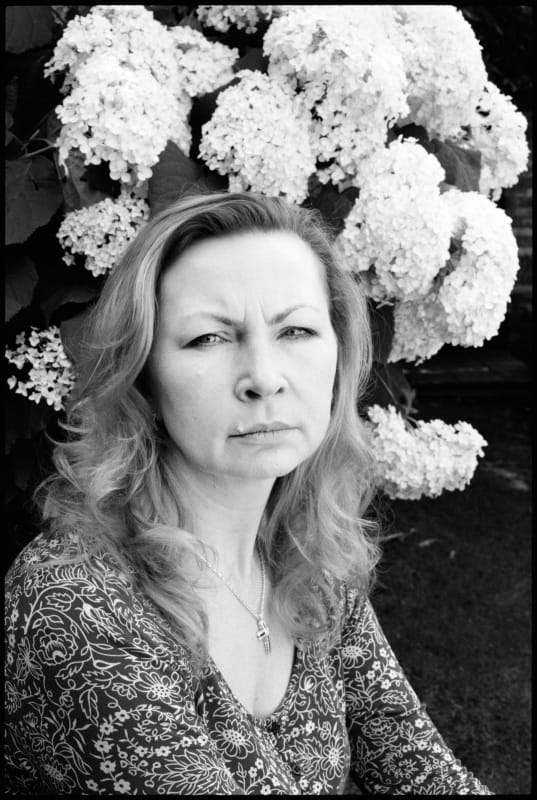In the first months after the full invasion of Ukraine by Russia in February 2022, there was significant media coverage showing primarily women and children leaving in droves, crossing at its western borders. Many of these refugees would be welcomed into the United Kingdom through the Homes for Ukraine scheme and have made a tentative life, living in limbo while coping with constant uncertainty. Worry and fear about loved ones left behind, most notably husbands, fathers, sons, and brothers who are serving in the military or waiting to be called up, is always in the background, in tandem with ongoing serious concerns as to how long the war will last and when it will end.
Photographer Marissa Roth has been working on a multi-decade personal global photo essay, One Person Crying: Women and War, that encompasses subjects including Holocaust survivors, Japanese women who survived the A-Bomb in Hiroshima, and survivors of the Srebrenica Massacre in Bosnia. Through her experiences working on this extensive project, she learned that time is a crucial element in telling these stories and chose to photograph and interview Ukrainian women at this juncture in their lives when they are in this heightened moment of transition, when the past as they knew it has been destroyed, and the future remains a blank canvas.
Roth spent the first six months of 2024 photographing and interviewing Ukrainian women in England, creating this exhibition, Sorrow and Light: Ukrainian Women War Refugees in Britain. In determining her subjects, she chose to highlight women who came from a cross-section of geographical locations, from Kyiv and Odesa to the Luhansk region in the east. Their stories all begin the same way, starting with the shocking explosions in the early morning hours on Thursday 24 February 2022. After that, their memories of survival and exodus vary; some having to make wrenching decisions overnight, others after moving to country homes thinking they were safe, only to be forced to flee months later. Some of these women came to the UK alone, others with their children and grandchildren.
These women displayed a range of emotions during the photo sessions and interviews; all of them inhabited strength and hope, even as they wept. Some of their faces are open with telling feelings, others are masked with guarded grace. Some are stoic and resolute about the reality of their situation, others embraced the unexpected opportunities to be in England. Some want to go home, others would like to stay. For their portraits, some hold precious memories of deceased loved ones in their hands through photographs on mobile phones, others chose to wear traditional Ukrainian clothing as a statement of solidarity for their country.
In addition to this exhibition, these portraits and interviews will be conserved in the Shevchenko Library and Archive in London as documents in testimony of the legacy of Ukrainians who migrated to England starting in the late 19th century, becoming part of the greater history of refugees who have been welcomed into the UK, thereby adding to this heritage of humanity and compassion.


